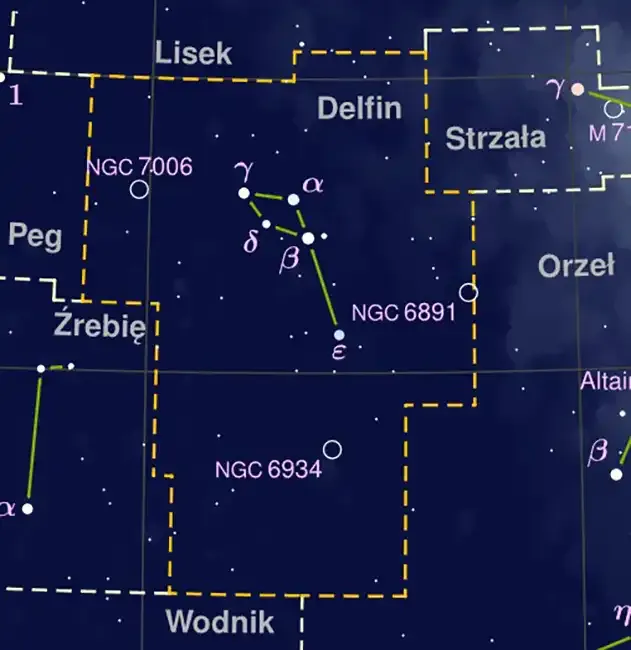
Delphinus, the Dolphin, is a small but distinctive constellation located in the northern sky. It is one of the 48 constellations listed by the 2nd-century astronomer Ptolemy and remains one of the 88 modern constellations. Despite its size, Delphinus is easily recognizable due to its unique shape, which resembles a dolphin leaping out of the water.
Key Features
Delphinus is a relatively faint constellation, with its brightest stars being of the fourth magnitude. The constellation covers an area of 189 square degrees and ranks 69th in size among the 88 constellations. The main asterism in Delphinus is composed of five stars that form a pattern known as "Job's Coffin," which is the body of the dolphin.
Mythology
In Greek mythology, Delphinus is associated with several stories, but one of the most popular involves the god Poseidon. According to the myth, Poseidon sent a dolphin to find the nymph Amphitrite, whom he wished to marry. The dolphin successfully located Amphitrite and convinced her to marry Poseidon, for which it was placed in the sky as a constellation in gratitude.
Another myth tells the story of Arion, a musician and poet. After being thrown overboard by pirates, Arion was saved by a dolphin, which carried him to safety. In gratitude, the dolphin was also placed among the stars.
Notable Stars
- Sualocin (Alpha Delphini): The brightest star in Delphinus, Sualocin is a binary star system located about 240 light-years from Earth. Its apparent magnitude is 3.77.
- Rotanev (Beta Delphini): The second-brightest star in the constellation, Rotanev is also a binary system with an apparent magnitude of 3.63. It lies approximately 97 light-years away.
- Gamma Delphini: This is a popular double star for amateur astronomers. It consists of a yellow and a red dwarf star, easily resolvable in small telescopes.
Visibility
Delphinus is visible in both the Northern and Southern Hemispheres, although it is best observed from the Northern Hemisphere. The constellation is most prominent during the late summer and early autumn months, particularly in August and September. It can be found near the celestial equator, bordered by the constellations Vulpecula, Sagitta, Aquila, Aquarius, Equuleus, and Pegasus.
Tips for Observing
- Location: To locate Delphinus, first find the bright stars of the Summer Triangle—Vega, Altair, and Deneb. Delphinus is situated to the northeast of Altair, in the direction of the constellation Pegasus.
- Tools: While the constellation can be seen with the naked eye, a small telescope or binoculars will help in resolving the double stars and other faint objects within Delphinus.
- Dark Skies: For the best viewing experience, observe Delphinus from a location with minimal light pollution. The faint stars of this constellation can be challenging to see in urban areas.
